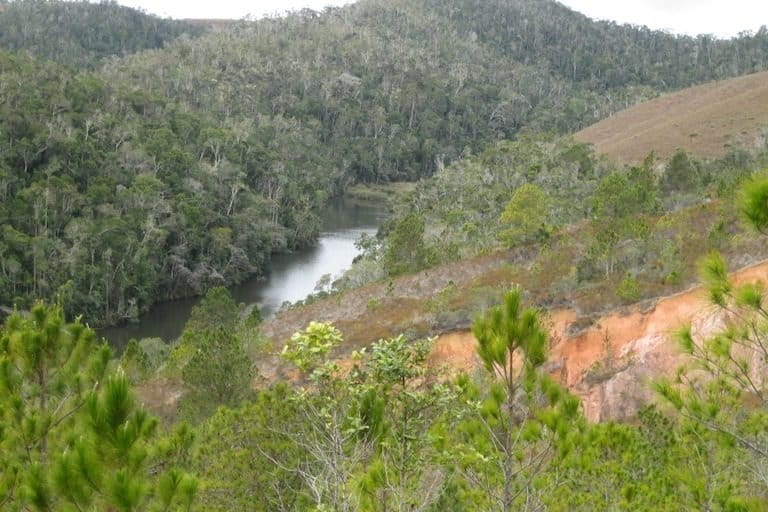- Madagascar plans to acquire drones to help with its massive official reforestation campaign.
- The country aims to plant 60 million trees per year in an attempt to reconstruct its green architecture and restore ecological balance.
- It has already experimented with drones to help relief efforts during natural disasters and to deliver medical supplies in remote regions.
ANTANANARIVO, Madagascar — To achieve its ambitious large-scale reforestation goals, Madagascar is turning to the sky. The country will use drones to plant trees in isolated areas. The plan is to drop up to 400,000 tree seeds per day.
In a speech to the Senate on June 23, Prime Minister Christian Ntsay mentioned the acquisition of 10 drones to augment manual tree-planting efforts by enabling coverage of difficult-to-access areas. The purchase will take place sometime this year.
The country aims to produce an average of 60 million young seedlings per year, focusing on native and threatened precious wood species, such as rosewood and ebony. It will also consider fast-growing trees like paulownia and acacia, as well as bamboo, according to Ntsay. The government will engage citizens in growing and manually planting trees at the district and municipal level.

Since 2000, Madagascar has lost 23% of its forests. In total, 3.89 million hectares (9.6 million acres) were lost between 2001 and 2019, or nearly 205,000 ha (506,000 acres) per year, according to Global Forest Watch.
Conservationists fear that if the destruction continues at this rate, Madagascan forests won’t survive longer than a few more decades.
“For we conservation professionals, to hear that Madagascar will once again become a green island is one of the encouraging pieces of news,” said Jonah Ratsimbazafy, a primatologist and general secretary of the Madagascar Primate Study and Research Group (GERP).
In March 2019, President Andry Rajoelina announced the goal of reforesting 40,000 ha (99,000 acres) per year over five years. The program aims to reconstruct the island’s green architecture and restore ecological balance to a country confronted by the challenges of climate change and development. Last year, the country planted 41,065 ha (101,000 acres): 38,609 ha (95,000 acres) on land and 2,457 ha (6,000 acres) of mangroves.

After having experimented with drones to help with relief efforts during natural disasters and to deliver medical supplies in remote regions, Madagascar is now turning to drones for the environment. On Jan. 19, during the official reforestation campaign launch, the government announced it was exploring the use of drones in difficult-to-access areas, along with the more typical methods of planting saplings by hand and dropping seeds from planes. The prime minister’s June announcement of the drone acquisition signaled this would become reality.
Mongabay requested details on the government’s plan for using the drones, but a representative for the Ministry of the Environment and Sustainable Development (MEDD) said they did not have the information, and the communications director for the president’s office did not provide promised responses by the time this story was originally published in French in August.

“I sincerely think that it is an excellent and praiseworthy initiative,” said Laza Randriamifidimanana, an entrepreneur and founder of Threeshells Madagascar, an Antananarivo firm specializing in cutting-edge technologies. He said he had experimented with using drones for small-scale reforestation, as a matter of personal interest. “The advantage of drones is that we have much more feedback from testing and improvement.”
Although the government has not made public the model of drone it will purchase, the ones best known for tree-planting were developed by the U.K-based startup Dendra Systems (formerly known as BioCarbon Engineering). This system, used in Myanmar since 2018, launches seed missiles into isolated areas lacking trees.
According to the news site Turfu, these drones first fly over the target area to map it and collect data on soil conditions and topography. Analysis of the data informs development of the interventions and configuration of the drones for aerial seeding.

In Madagascar, conservation experts remain on guard. “The approach requires rigorous sorting of the seeds according to the characteristics of the soil,” said Mamy Rakotoarijaona, director-general of Madagascar National Parks, a quasigovernmental agency responsible for managing many of the country’s protected areas. “Those adapted for low-altitude regions will never give the yields expected at high altitude.”
Rakotoarijaona said that today mechanical planting techniques are replacing natural seed dispersers such as lemurs and certain endemic bird species. For millions of years, these species, the majority of which are now threatened, have helped forests reproduce without human intervention.

In terms of soil quality, Ratsimbazafy of GERP said he’s not very optimistic. According to him, in many places Madagascar’s soil, besieged by fires for years, is poor in the nutritive elements necessary for seed growth. “The success of reforestation is not measured by the numbers planted, but by the number of living trees,” he added.
Similarly, Lily-Arison René de Roland, national director of the U.S.-based Peregrine Fund’s Madagascar project, said following up on plantings was of paramount importance. This includes monitoring and maintaining seedlings and constructing firebreaks around reforested areas, he said. Bushfires are a major factor in the destruction of Madagascar’s forests.

Ratsimbazafy warned against the planting of eucalyptus, which are notoriously water-intensive, and pines, which he said can block development of young saplings and “condemn” soils. For decades, people have planted these trees across Madagascar for construction material, firewood and charcoal. They represent an economic asset but are colonizing many wooded areas, even conservation sites. This is also the case with grevilleas, planted by aerial seeding in the late 1980s to reverse deforestation and prevent soil erosion.
At the time of this story’s original publication, the MEDD had not specified which tree species would be planted by aerial seeding or where the drones would be deployed, nor provided details on the monitoring of reforestation by drones.

Banner image of a drone prototype used to help provide reconnaissance for first responders to floods, during a demonstration in Madagascar. Image by BNGRC.
This article was first published in French on our Mongabay Français site.
